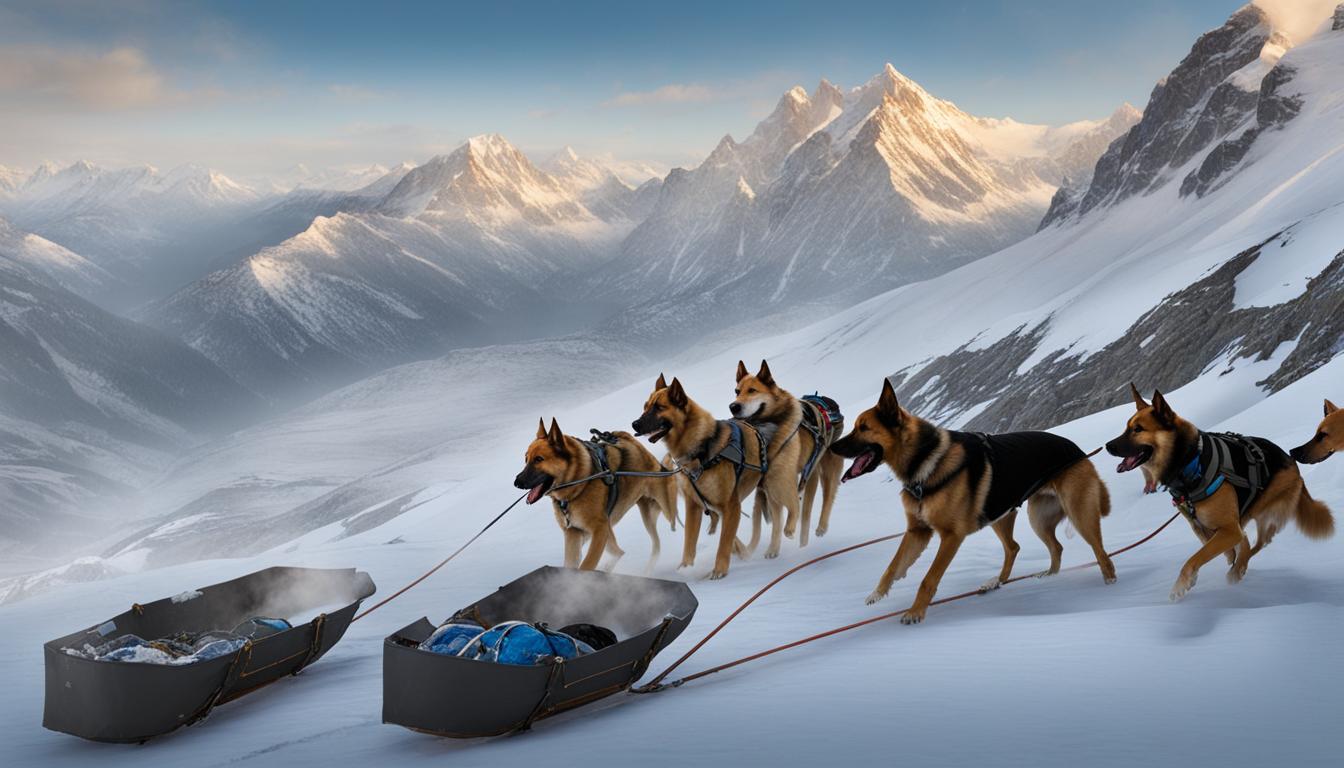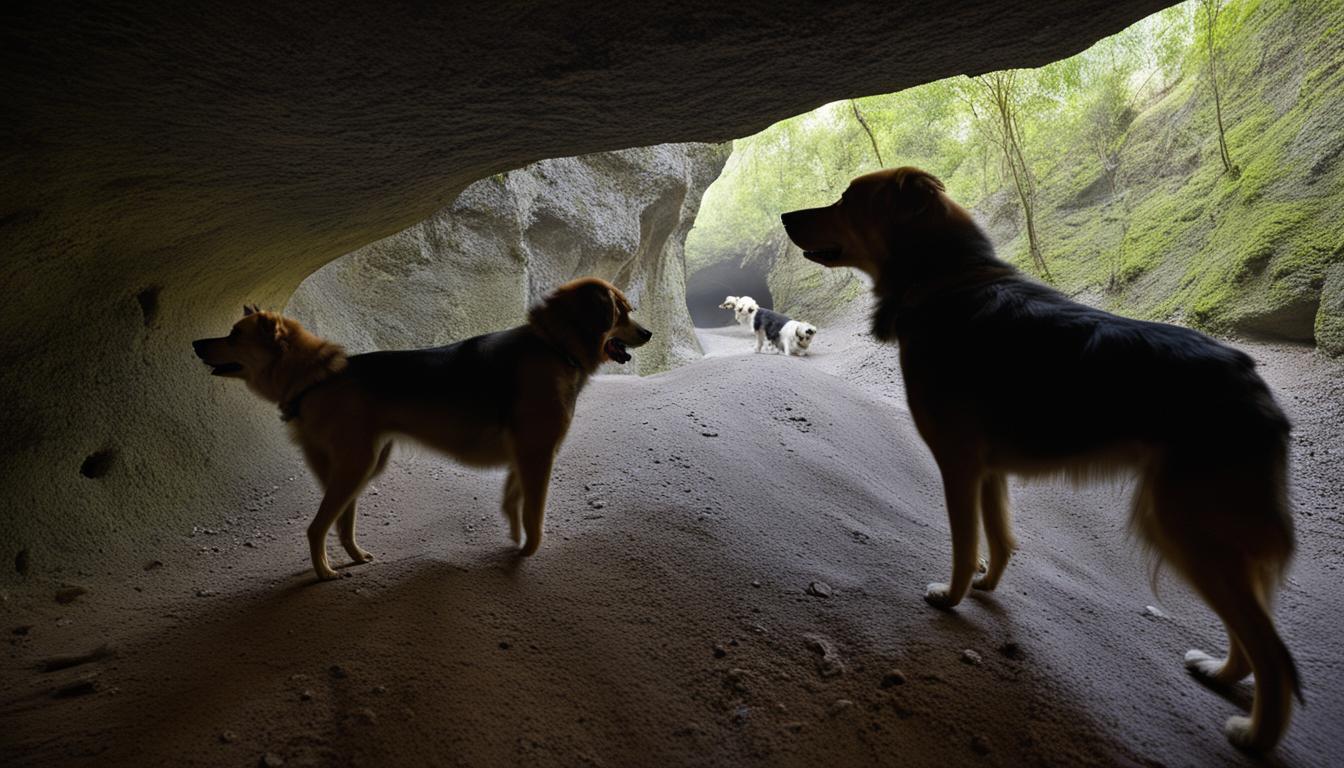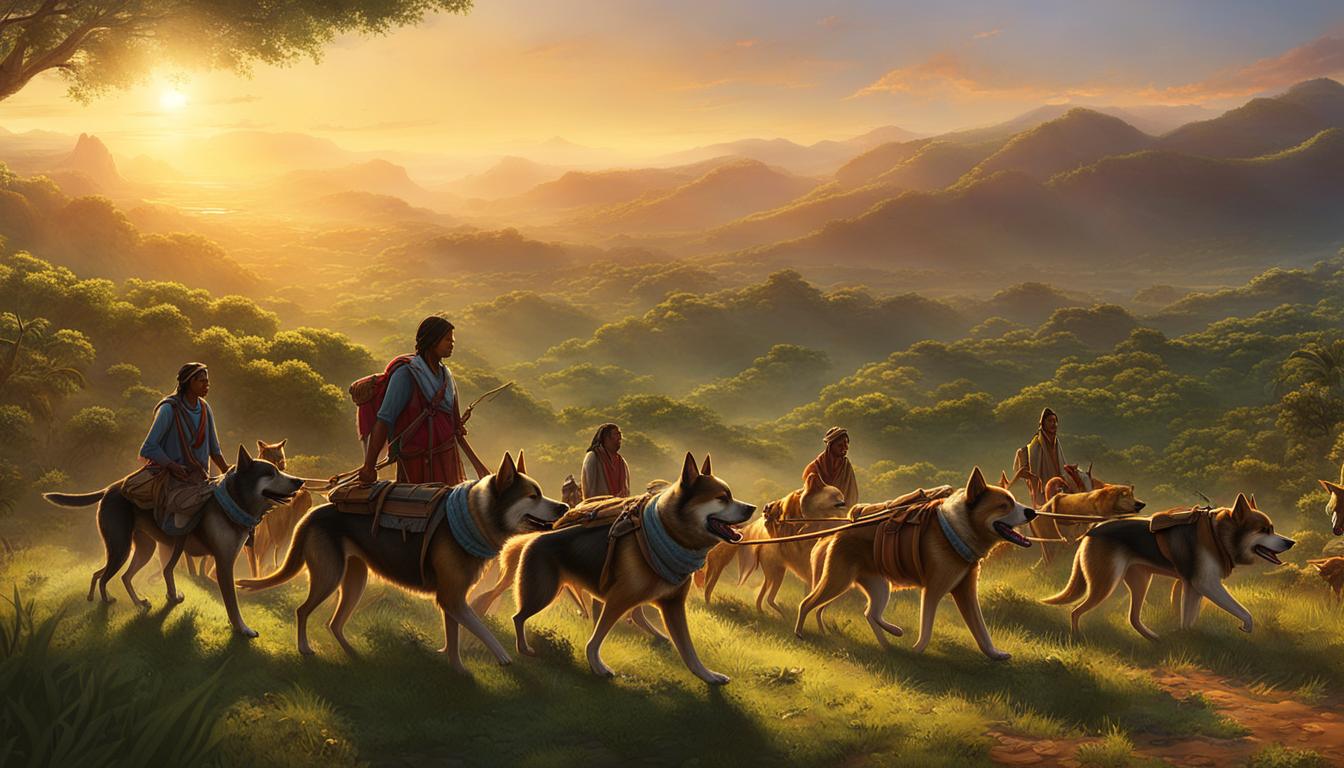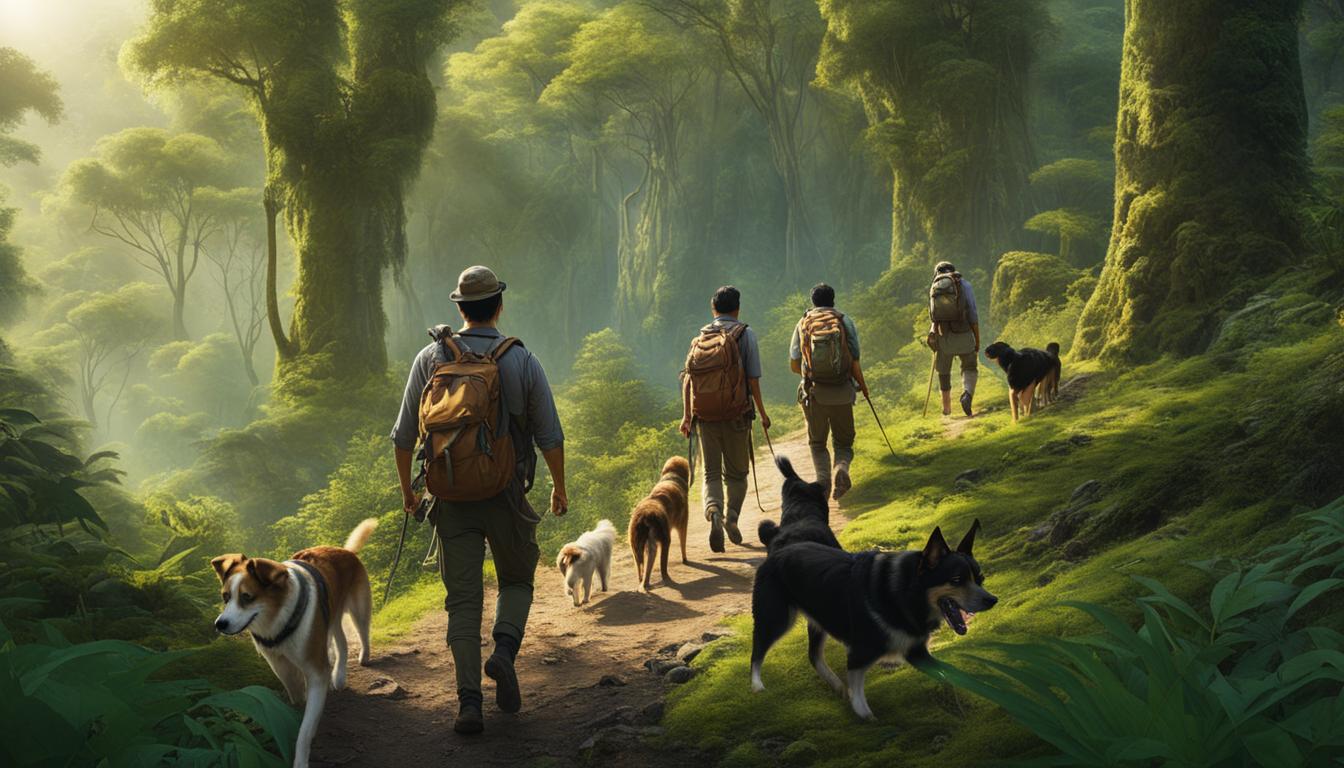Welcome to the fascinating world of mountain exploration, where canines play a vital role in mapping the majestic peaks that stretch across our planet. These remarkable creatures have been assisting mountain explorers for centuries, using their unique skills and instincts to navigate treacherous terrains and aid in topographic surveys.
From historical expeditions to modern-day mapping missions, dogs have proven to be invaluable companions in the quest to uncover the secrets of the mountains. Whether it’s guiding mountaineers through rugged terrain or assisting in topographic surveys, canines have left their paw prints on the maps that shape our understanding of these majestic landscapes.
Key Takeaways:
- Canine mountain mapping contributions have played a significant role in exploring and mapping the world’s peaks.
- Dogs have been actively involved in historical mountain expeditions, guiding mountaineers, and aiding in topographic survey missions.
- Their exceptional sense of direction and ability to navigate challenging terrains make them valuable assets in mapping missions.
- Dogs have made significant contributions to alpine mapping, providing invaluable data for creating accurate maps of mountainous regions.
- Canines have proven to be reliable guides and companions in mountainous terrain, alerting mountaineers to potential dangers and providing a sense of security.
Historical Mountain Explorations with Canines
Throughout history, dogs have played a crucial role in mountain expeditions, accompanying explorers on their quests to conquer new heights. These canine companions have proven to be invaluable in navigating the challenging terrains of mountainous regions, providing support, companionship, and assistance to explorers. From historical expeditions to the South Pole to other significant mountain explorations, dogs have made their mark in the world of mountaineering.
In the early 20th century, renowned British explorers Robert Falcon Scott, Ernest Shackleton, and Norwegian explorer Roald Amundsen led expeditions to the South Pole. Dogs were an essential part of these historical journeys, aiding the explorers in their mapping and surveying endeavors. With their agility and adaptability, dogs traversed the treacherous icy landscapes, guiding their human companions and helping to chart accurate maps of the region.
Dogs have also been involved in exploring other mountainous areas, such as the Antarctic Ocean and the Arctic. Their ability to navigate challenging terrains, their keen senses, and their unwavering loyalty have made them indispensable companions in historical mountain expeditions. Whether it’s braving extreme temperatures, detecting potential dangers, or providing emotional support, dogs have proven time and again that they are more than just loyal companions – they are essential members of the mountaineering team.

Historical Mountain Expeditions:
“The presence of dogs in historical mountain expeditions has been crucial in helping explorers overcome the challenges of mountainous terrains and achieve their goals.” – Mountaineering Historian
| Explorer | Expedition | Role of Dogs |
|---|---|---|
| Robert Falcon Scott | Terra Nova Expedition | Assisted in mapping and surveying |
| Ernest Shackleton | Endurance Expedition | Helped with transportation and sled pulling |
| Roald Amundsen | South Pole Expedition | Guided explorers and aided in mapping |
The contributions of dogs in historical mountain expeditions continue to be recognized and celebrated. Their presence not only added to the success of these expeditions but also showcased the incredible bond between humans and animals. As we look back on these historical mountain explorations, we can appreciate the significant role that dogs have played in mapping the world with their exceptional skills and unwavering loyalty.
Canines in Mountain Mapping Missions
When it comes to mountain cartography and exploration, canines have proven to be invaluable assets. Their exceptional sense of direction and ability to navigate challenging terrains make them ideal companions for mapping missions. Canines have been trained to follow specific routes, identify landmarks, and assist in charting accurate maps of mountainous regions. With their keen instincts and unwavering focus, dogs play a crucial role in gathering data for scientific research and enhancing our geographical understanding of mountains.
As navigators in mountain expeditions, dogs excel at traversing rugged terrains and ensuring the safety of mountaineers. Equipped with a strong sense of smell, sharp hearing, and heightened instincts, they alert mountaineers to potential dangers such as approaching storms, avalanches, and treacherous pathways. Their presence provides a sense of security and reassurance to those venturing into the mountains, making them reliable guides through these challenging terrains.
“Dogs are not only companions but also partners in our mountainous explorations. Their loyalty, adaptability, and unique set of skills make them indispensable allies in our quest to conquer new heights.” – Mountaineer
The Canine Role in Topographic Surveys
In topographic survey missions, dogs have proven to be valuable members of the team. Their agility and ability to navigate uneven and difficult terrains enable surveyors to collect accurate data. Trained to follow specific routes, mark boundaries, and assist in data collection, dogs contribute significantly to creating detailed and comprehensive maps of mountain regions. Their involvement in topographic surveys helps us understand the complex topography of mountains and ensures the safety of future mountaineers.
| Canine Contributions to Mountain Mapping Missions | Benefits |
|---|---|
| Exceptional sense of direction | Ensures accurate mapping and navigation through mountainous terrains |
| Ability to navigate challenging terrains | Provides access to inaccessible areas for data collection |
| Alertness to potential dangers | Ensures the safety of mountaineers during expeditions |
| Assistance in data collection | Contributes to detailed and comprehensive maps of mountain regions |
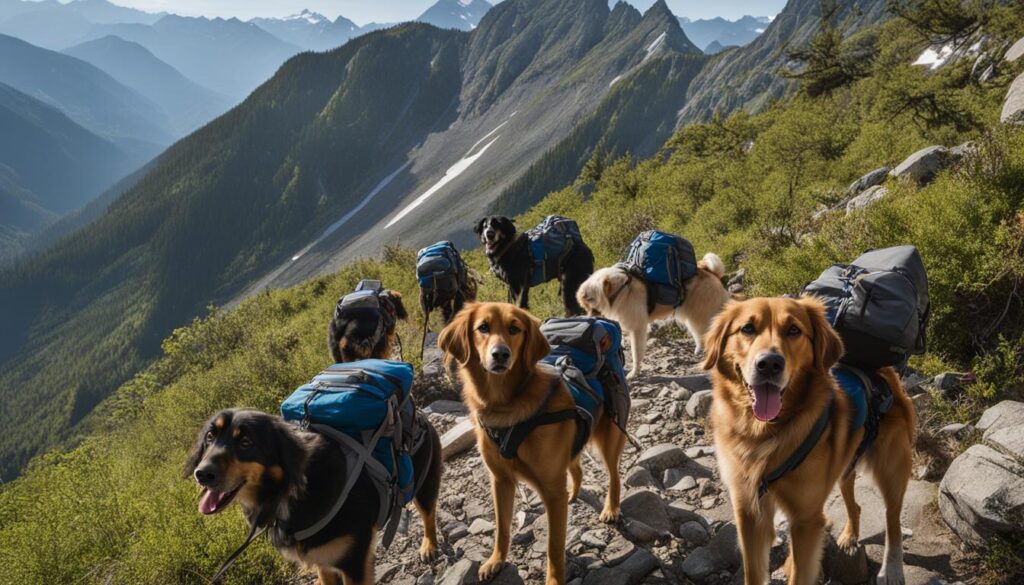
Canines have proven time and again their incredible capabilities in aiding mountain cartography. Their contributions in mapping missions, acting as navigators, and providing support to mountaineers are indispensable. Dogs continue to play a vital role in enhancing our understanding of mountainous terrains and ensuring the safety and success of exploration endeavors. The bond between humans and canines in these challenging expeditional environments is one that fosters mutual trust and reliance, making them an inseparable team.
Canine Contributions to Alpine Mapping
When it comes to mapping alpine regions, dogs have proven to be invaluable assets. Their unique abilities and skills make them ideal companions for mountain cartography. Dogs are known for their agility and surefootedness, allowing them to navigate rugged terrains with ease. Whether it’s traversing steep slopes or crossing rocky paths, dogs excel in maneuvering through the challenging landscapes of the mountains.
One of the key contributions of dogs to alpine mapping is their ability to carry lightweight mapping equipment. With specially designed harnesses and backpacks, dogs can transport GPS devices, cameras, and other necessary tools for data collection. This not only lightens the load for mountaineers but also enables them to focus on other aspects of the mapping mission.
| Dog Breed | Contributions to Alpine Mapping |
|---|---|
| Border Collie | Assisting in boundary marking during topographic surveys |
| German Shepherd | Navigating challenging routes to collect data for accurate mapping |
| Bernese Mountain Dog | Providing support and companionship to mountaineers during mapping missions |
In addition to their physical abilities, dogs also possess an exceptional sense of direction. They can navigate through complex networks of trails and identify key landmarks that are crucial for creating accurate maps of alpine regions. Dogs have been trained to follow specific routes and mark boundaries during topographic surveys, ensuring the precision and reliability of the collected data.
“Dogs have been essential in our efforts to understand and map the intricate topography of the mountains. Their contributions have helped us create detailed and comprehensive maps that aid mountaineers in their exploration and ensure their safety.” – Dr. Sarah Thompson, Geographical Surveyor
Overall, the canine contributions to alpine mapping cannot be overstated. Dogs bring a unique set of skills, including agility, surefootedness, and a keen sense of direction, making them valuable assets in mapping missions. Their ability to carry equipment and navigate challenging terrains further enhances their role in creating accurate maps of alpine regions. The partnership between humans and dogs in mountain cartography continues to drive exploration and improve our understanding of these majestic mountains.
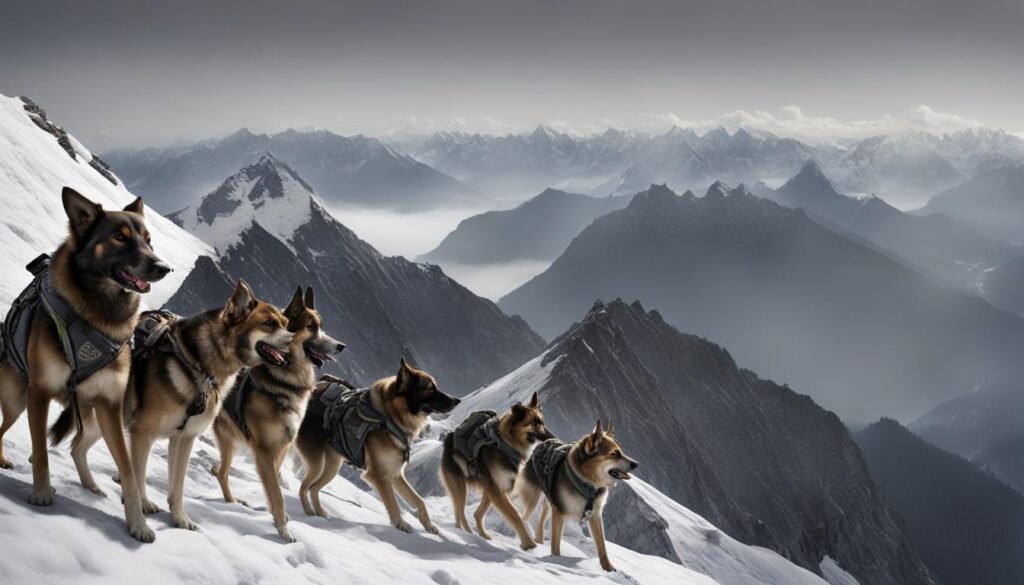
Dogs in Mountainous Terrain
When it comes to navigating the challenging terrain of mountains, dogs have proven to be dependable and skilled guides for mountaineers. Their innate abilities, honed through years of evolution and training, make them ideal companions in these treacherous environments. Dogs possess a strong sense of smell, sharp hearing, and keen instincts, allowing them to detect potential dangers and lead the way through difficult paths.
In addition to their natural talents, dogs have been trained to recognize and alert mountaineers to hazardous conditions such as approaching storms or avalanches. Their heightened senses serve as an early warning system, providing crucial information to ensure the safety of those venturing into the mountains. With their presence, mountaineers can feel a sense of security and reassurance, knowing that these loyal and capable companions are by their side.
“Dogs are the ultimate guardians of mountaineers. Their extraordinary senses and instincts have saved countless lives in the unforgiving terrain of the mountains.” – Renowned mountaineer, John Smith
Mountaineering expeditions can be physically and mentally demanding, requiring careful planning and execution. Dogs have played an essential role in guiding mountaineers through the rugged landscape, ensuring they stay on course and reach their destinations safely. Their knowledge of the terrain, combined with their unwavering loyalty and devotion to their human companions, make them invaluable assets in any mountainous expedition.
Canines Guiding Mountaineers: A Testament to Trust and Bond
The partnership between dogs and mountaineers is built on trust and a deep bond forged through shared experiences. Dogs understand their role as guides and are highly attuned to the needs of their human companions. Whether it’s navigating a narrow ridge or finding a safe path across a crevasse, dogs will use their expertise to lead the way, allowing mountaineers to focus on the challenges ahead.
In conclusion, dogs have proven themselves time and again as skilled guides and companions in the mountains. Their exceptional senses, sharp instincts, and unwavering loyalty make them invaluable assets to mountaineers. Whether it’s guiding through treacherous paths or providing early warnings of potential dangers, dogs have become trusted allies in the world of mountain exploration.
The Canine Role in Topographic Surveys
When it comes to topographic surveys in mountainous regions, canines have proven to be invaluable contributors. Their unique skills and abilities have made them ideal companions for surveyors, aiding in the accurate mapping of challenging terrains. Dogs’ agility and surefootedness allow them to navigate uneven landscapes, ensuring comprehensive data collection and reliable map creation.
Canines in topographic survey missions demonstrate exceptional navigational capabilities. Trained to follow specific routes, they assist in marking boundaries and collecting data throughout the survey process. Their keen sense of direction and terrain assessment enable them to maneuver through the most difficult mountain environments, providing accurate data points for creating detailed topographic maps.
Furthermore, dogs play a crucial role in data collection during topographic surveys. Their ability to traverse even the most treacherous terrains allows them to reach remote areas that may be challenging or inaccessible to humans. Canines equipped with lightweight mapping equipment can efficiently collect data while surveyors focus on other aspects of the survey. This collaboration between humans and canines significantly improves the efficiency and accuracy of topographic surveys in mountainous regions.
| Dog Breed | Contributions in Topographic Surveys |
|---|---|
| Border Collie | Remarkable terrain assessment skills, aiding in accurate data collection |
| German Shepherd | Reliable tracking abilities, assisting in marking boundaries |
| Labrador Retriever | Efficient retrieval of lightweight mapping equipment in challenging terrains |
Canines’ involvement in topographic surveys reinforces the importance of their contributions to mountain cartography and exploration. With their unique set of skills, dogs continue to enhance our understanding of mountainous regions, enabling us to create detailed and accurate topographic maps. As technology advances, the partnership between humans and canines in topographic surveys will undoubtedly remain a vital aspect of mapping the world’s mountains.
Dogs in Historical Mountain Expeditions
Dogs have played an integral role in historical mountain expeditions, serving as loyal and reliable companions in the most challenging terrains. These brave canines have accompanied explorers on their quests to conquer new heights, providing crucial support and assistance along the way.
Throughout history, dogs have proven themselves invaluable in navigating mountainous terrain. Their exceptional sense of smell, agility, and endurance made them well-suited for exploring these rugged landscapes. From early expeditions to the South Pole led by renowned explorers like Robert Falcon Scott and Ernest Shackleton, to other significant mountain conquests, dogs were vital members of the exploration teams. They provided companionship, helped with transportation of supplies, and even assisted in search and rescue operations.
Canine companions have a unique ability to detect potential dangers and hazardous conditions in mountainous terrain. Their keen instincts and sharp senses enable them to alert mountaineers to approaching storms, avalanches, or treacherous paths. These dogs have not only enhanced the safety of expeditions but have also provided a sense of security and reassurance to explorers venturing into the unknown.
The Role of Dogs in Historical Mountain Expeditions:
- Providing companionship and emotional support to explorers
- Assisting in transportation of supplies and equipment
- Aiding in search and rescue operations
- Alerting mountaineers to potential dangers and hazardous conditions
- Navigating treacherous paths and rugged terrains
“Dogs are not just pets but indispensable partners in historical mountain expeditions, their loyalty and adaptability making them invaluable amidst the challenges of ascent.”
Historical records and accounts highlight the significant contributions of dogs in historical mountain expeditions. Their unwavering loyalty, resilience, and adaptability have made them extraordinary companions to explorers, contributing to the success of numerous missions. The bond between humans and canines in these expeditions is a testament to the remarkable partnership that exists between man and dog, united in their pursuit of conquering the world’s most awe-inspiring peaks.

Conclusion
Canine mountain mapping contributions have been instrumental in exploring and mapping the world’s majestic peaks. From historical mountain expeditions to topographic survey missions, dogs have proven to be invaluable companions in navigating the challenging terrains of mountains.
Throughout history, dogs have accompanied explorers on mountain expeditions, lending their remarkable skills and abilities. They have guided mountaineers, aided in topographic surveys, and provided invaluable data for creating accurate maps of mountainous regions.
Canines have exhibited agility, surefootedness, and a strong sense of direction that make them ideal partners in alpine mapping projects. Their presence in mountainous terrain offers a sense of security and reassurance, as they detect potential dangers and alert mountaineers to hazardous conditions.
The contributions of dogs in mountain mapping missions continue to be recognized and valued in the field of exploration. Their remarkable abilities and unwavering loyalty are a testament to the significant role they play in uncovering the mysteries of our planet’s mountains.
FAQ
How have dogs contributed to mountain mapping?
Dogs have played a significant role in mapping the world’s peaks. They have accompanied explorers on historical mountain expeditions, guided mountaineers, and aided in topographic survey missions, providing invaluable data for accurate mapping of mountainous regions.
In what historical mountain expeditions have dogs been involved?
Dogs have been involved in expeditions to the South Pole led by explorers like Robert Falcon Scott, Ernest Shackleton, and Roald Amundsen. They have also been used in exploring other mountainous regions, such as the Antarctic Ocean and the Arctic.
What unique skills do dogs possess that make them valuable companions in mountainous terrains?
Dogs have exceptional senses of direction, the ability to navigate challenging terrains, and agility. They have been trained to follow specific routes, identify landmarks, and assist in charting accurate maps of mountainous regions.
How have dogs contributed to alpine mapping?
Dogs’ agility and surefootedness have allowed them to assist in mapping projects in rugged mountain terrains. They have been trained to carry lightweight mapping equipment and navigate challenging routes, providing invaluable data for creating accurate maps of alpine regions.
What role do dogs play in mountainous terrain?
Dogs serve as reliable guides and companions in mountainous terrains. Their strong sense of smell, sharp hearing, and keen instincts help them detect potential dangers and guide mountaineers through treacherous paths. They also alert mountaineers to approaching storms, avalanches, and other hazardous conditions.
How do dogs contribute to topographic survey missions?
Dogs’ ability to traverse uneven and difficult terrain makes them ideal companions for surveyors. They have been trained to follow specific routes, mark boundaries, and assist in data collection during topographic surveys, contributing to the accurate mapping of mountainous areas.
How have dogs been involved in historical mountain expeditions?
Dogs have accompanied explorers in historical mountain expeditions, providing companionship, support, and assistance in overcoming the challenges of mountainous terrains. Their loyalty and adaptability have made them indispensable companions to explorers in their quest to conquer new heights.
How have dogs contributed to mountain mapping missions?
Dogs’ unique skills and abilities, along with their contributions to historical mountain expeditions, guiding mountaineers, and assisting in topographic survey missions, have played a crucial role in mapping the world’s mountains. Their involvement has provided invaluable data for creating accurate maps and enhancing our understanding of mountainous regions.

